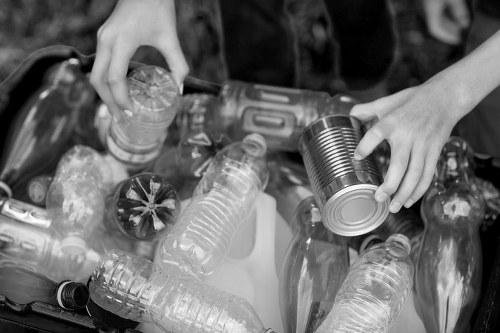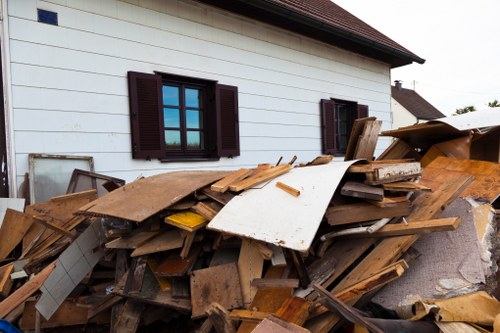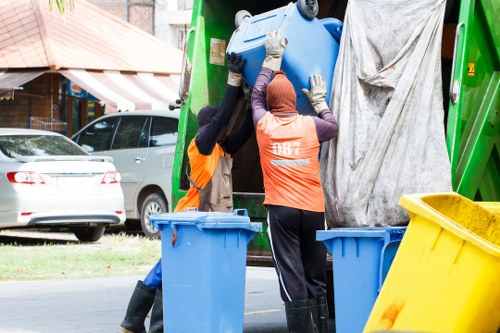Flat Clearance in Rubbish Clearances: Maximizing Efficiency and Sustainability
Introduction to Flat Clearance

Flat clearance has emerged as a critical component in the overall strategy of modern rubbish clearances. In a world that is increasingly focused on environmental responsibility and efficient waste management, the specialized practice of clearing flats—be they apartments, offices, or communal housing—serves not only to remove unwanted items but also to foster a more sustainable approach to managing refuse. This method encompasses everything from sorting recyclables to disposing of bulky items, and even includes measures to minimize disruption to residents.
The term flat clearance is used to describe a systematic approach to decluttering entire living spaces or commercial properties. Unlike standard rubbish clearance methods, flat clearance involves detailed planning, customised packaging of wastes, and an attention to ensuring that each step complies with both environmental and regulatory standards. This level of detail distinguishes flat clearance from ordinary clearance services that might not take into account the specific needs of multi-residential buildings.
Flat clearance in rubbish clearances is not just about removing unwanted items—it’s a comprehensive process that adds significant value to properties and communities. By streamlining the removal of items in flats, service providers optimize the clearance process while reducing waste accumulation, lowering carbon footprints, and ensuring that disposal methods adhere to eco-friendly practices. This article explores the many facets of flat clearance, investigates the latest industry trends, and offers insights into sustainable practices that can be adopted to further enhance efficiency.
Understanding the Process of Flat Clearance

Successful flat clearance in rubbish clearances requires careful planning and a structured approach. The initial phase typically involves a comprehensive survey of the property, during which experts assess the volume and types of waste that need to be disposed of safely and effectively. This step is critical as it enables the team to devise a customized clearance plan that caters to the nuances of the location and the specific requirements of the residents or business owners.
Once the assessment is complete, the clearance team moves on to developing a detailed action plan. Key steps include scheduling, categorizing items for recycling or donation, and ensuring that the process complies with local waste management regulations. Many companies utilize advanced technologies such as digital mapping and project management software to track the progress of the clearance operation efficiently.
In this phase, communication is paramount. Operators provide clear instructions to residents and stakeholders, ensuring minimal disruption during the flat clearance process. Transparent communication and clear timelines contribute significantly to the overall success of the operation. Additionally, checklists and standard operating procedures help maintain a consistent level of service, guaranteeing that each flat is cleared safely and thoroughly.
Key Benefits and Challenges in Rubbish Clearances

Operational Benefits
Flat clearance in rubbish clearances offers a multitude of benefits that go beyond the mere removal of waste. One of the major advantages is the enhancement of operational efficiency. By using a tailored approach, clearance companies can reduce the time required for each job, enabling them to service more flats within a limited time frame. This efficiency not only saves costs but also contributes to a positive impact on the environment by reducing the number of trips required for waste disposal.
Another benefit is the improvement in community aesthetics and safety. Unwanted items and accumulated rubbish can lead to health hazards and an overall decline in the quality of life. Effective flat clearances help in maintaining cleaner communal spaces and buildings, thereby boosting property values and ensuring a healthier living environment. Regular maintenance and periodic clearances are important in preventing long-term waste build-up and in preserving the well-being of occupants.
However, flat clearance operations are not without their challenges. These services often have to deal with space constraints, sometimes inaccessible areas, and diverse types of refuse—from hazardous materials to oversized furniture. Adaptive strategies and a robust regulatory framework are essential to handle these obstacles. An experienced team well-versed in local regulations and safety protocols is crucial to mitigate risks and ensure that all processes are executed correctly.
Sustainability and Modern Practices in Flat Clearance

Eco-Friendly Initiatives
Environmental sustainability is at the core of modern flat clearance practices in rubbish clearances. Many service providers have adopted green initiatives that focus on recycling, reusing, and reducing waste. This approach not only minimizes the environmental impact but also aligns with government regulations and global sustainability goals. In many cases, companies offer specialized packages that include separate handling of recyclables, electronics, and hazardous waste.
Modern practices in the field include the use of state-of-the-art sorting equipment, which segregates waste more effectively, and powerful data analytics tools that track waste patterns and help in planning future clearances. These technologies ensure that sustainable methods are at the forefront of operations. Moreover, partnerships with recycling plants and donation centers are established to ensure that usable items are not lost but given a second life. For instance, old furniture or appliances might be refurbished and then donated to charities or community centers, thereby extending their usability.
The role of technology in revolutionizing flat clearance is undeniable. Cloud-based management systems, GPS tracking, and mobile applications facilitate real-time updates and enhance operational transparency. These innovative solutions help in reducing fuel consumption, cutting down unnecessary journeys, and ultimately lowering the overall carbon footprint of the operation. Additionally, training programs and certifications for staff ensure that they are well-equipped to handle new challenges—reinforcing the importance of a tech-forward approach in waste management practices.
Planning, Execution, and Call-to-Action

Strategic Execution and Final Considerations
Effective flat clearance in rubbish clearances rests on meticulous planning and flawless execution. The entire process, from the initial inspection of the flat to the final disposal of waste, is carefully orchestrated to ensure efficiency and adherence to environmental standards. Strategic planning involves the coordination of multiple teams, precise scheduling, and the integration of safety measures designed to protect both the workforce and the inhabitants of the property.
Another critical aspect is the integration of regulatory compliance and best practices throughout the operation. Compliance with local government policies and environmental safeguards is crucial in preventing legal complications and ensuring that the service operates within the necessary frameworks. Regular audits and adherence to safety guidelines form the backbone of successful rubbish clearance operations. Additionally, staff training is continuously updated to keep up with evolving industry standards and regulations, ensuring high levels of professionalism and accountability.
For property managers, homeowners, and business owners alike, investing in professional flat clearance services brings long-term benefits. Besides immediate improvements such as better hygiene and visual appeal, the process leads to elevated property values and a safer environment for residents. Clear, consistent communication and transparent pricing policies build long-term relationships with clients and enhance the reputation of the service provider. Contact us today to learn more about tailoring a flat clearance plan that suits your unique needs, or book your service now to experience a transformation that prioritizes sustainability, efficiency, and overall peace of mind.
Additional Insights into Best Practices
To further enhance your understanding of flat clearance in rubbish clearances, consider the following points:
- Comprehensive Assessment: Begin with a detailed evaluation of the space to be cleared.
- Customized Planning: Develop a bespoke clearance strategy based on the specific needs of your flat.
- Regulatory Adherence: Always ensure that your clearance methods comply with all local and national waste management laws.
- Eco-Friendly Disposal: Prioritize recycling, repurposing, or donating items whenever possible.
Take Action Now
Implementing these practices can transform flat clearance into a more effective, efficient, and environmentally responsible process. It is the need of the hour to evaluate your waste management strategies and align them with modern sustainable practices. Whether you are managing a residential building or a commercial property, proper flat clearance services are key to creating safer and more aesthetically pleasing environments. Book your service now and join the movement towards smarter, greener waste management solutions.